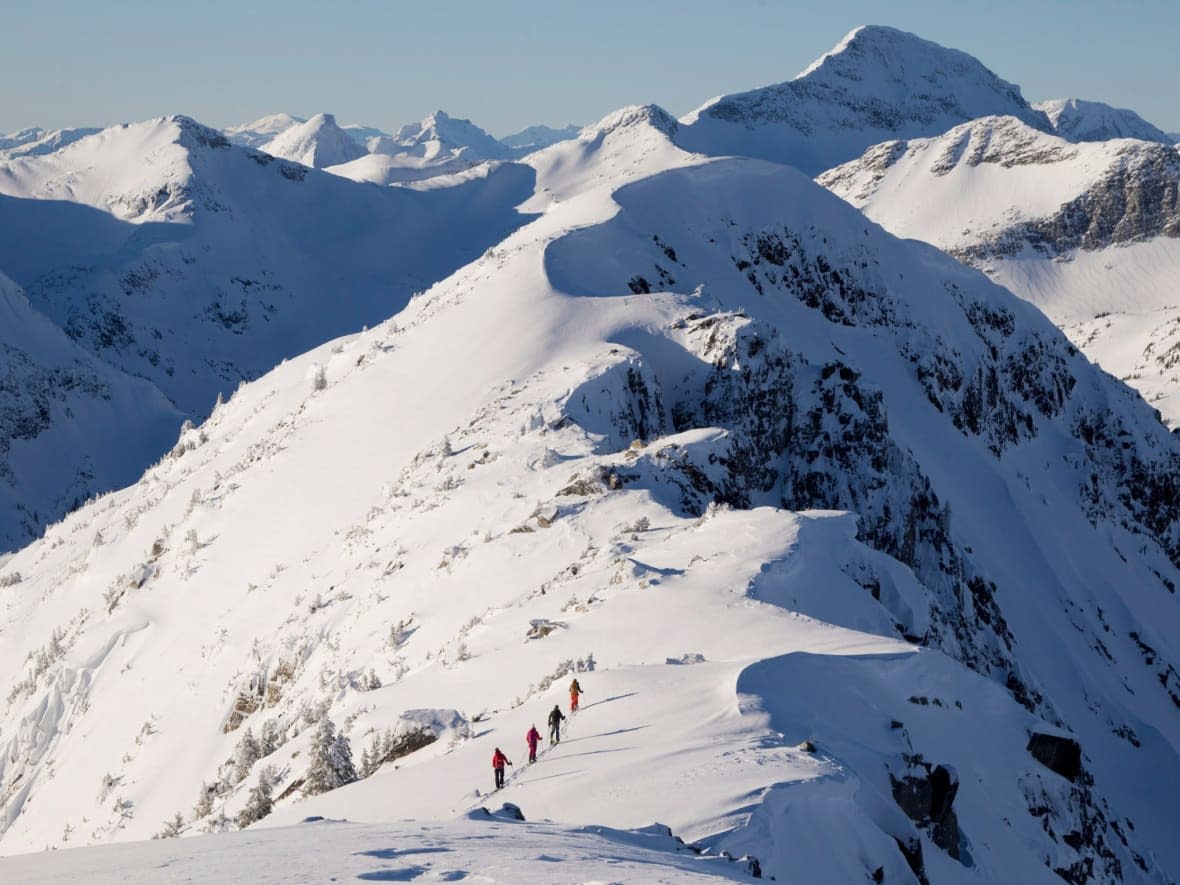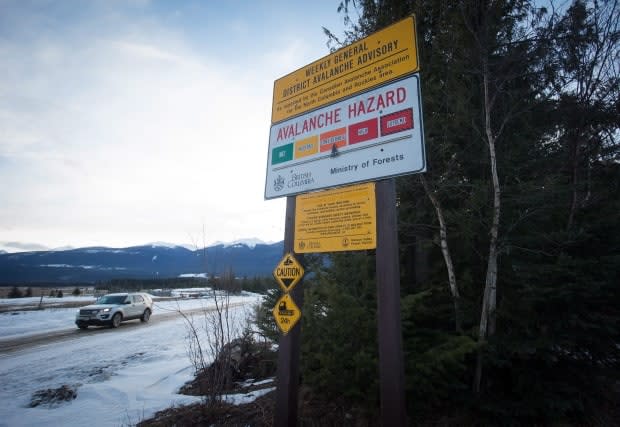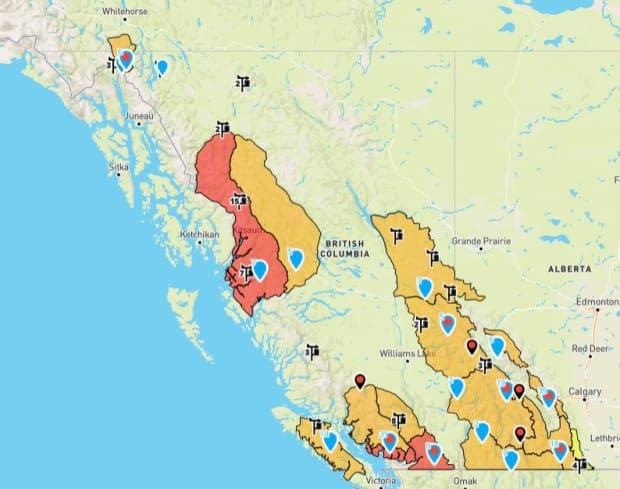Why is B.C.'s backcountry so susceptible to avalanches this year?

Twelve people have been killed in avalanches across B.C. this year, including experienced skiers, a search and rescue volunteer and brothers on a guided heli-skiing trip, while forecasters warn conditions are in place to make this one of the province's deadliest seasons in decades.
Avalanche Canada has compared this season's perilous snowpack with conditions seen in the winter of 2002-2003, when 25 people lost their lives in B.C.'s backcountry, making it one of the province's worst years on record for avalanche fatalities.
Experts have an explanation for what's making this season so deadly — and they say it started months ago.
How dangerous are avalanche conditions in B.C. right now?
This year's snowpack, with a weak layer of sugar-like crystals buried near the bottom, is being described as similar to that of 2003, when avalanches in Western Canada killed 25 people in B.C. and four in Alberta.
Avalanche Canada said conditions are particularly dangerous throughout the Interior, but more typical on B.C.'s South Coast.
Avalanche fatalities in B.C.
How many deaths have we had compared to past years?
As of March 1, there have been 12 recorded deaths in the 2022-2023 winter season. This is the highest number since 2015-2016 and the fourth-highest number over the past two decades.
British Columbia avalanche deaths per season
However, Avalanche Canada and backcountry experts warn against making straight comparisons between historic data and more recent years, as the number of people going into the mountains has significantly increased and, along with it, safety training — leading to fewer deaths on a per capita basis.
But they are still warning that this year's snowpack conditions are highly volatile and even trained professionals should use extra caution when choosing their routes.
What do experts mean when they talk about snowpack?
Snow that falls onto the ground and does not melt until warmer temperatures in the spring is called snowpack. Snowpack can consist of multiple layers of snow, each one from a different snowfall, that become compacted — or pressed firmly together — under the weight of the layers falling on top.
A weak snowpack happens when one of the middle layers doesn't bond well to those around it. This fragile layer can collapse under the weight of topside snow and slip away. This leads to a slide called a slab avalanche.
This year's snowpack has a one major weak layer closer to the base and various other bad layers too.

What caused this weak snowpack?
A large part of B.C.'s problem this year began in the fall.
A shallow amount of snow near the ground was frozen by long spells of Arctic air in November and December.
When a thin snowpack is exposed to cold temperatures for a long period of time, snow grains get bigger and sharper. That means less overall surface area, which means fewer spots for the crystal-like snow to bond with layers of powder on top.
It's left the B.C. Interior with a weak foundation holding up the rest of the deep snowpack.
"It's just a perfect combination of things to build a weak base," said Ryan Buhler, Avalanche Canada's forecast program supervisor.
How can you tell when a snowpack is weak or unstable?
There are multiple warning signs a snowpack isn't stable, though clues aren't popping up as often this year because the weak layer is so deep.
"It is catching people by surprise," Buhler said.
If you see cracks shooting across the snow under your weight, signs of a recent avalanche or hear a sound known as a "whumpf" — these are all signals the snowpack might not be safe.
A "whumpf" is the noise of snow falling into itself when a weak layer collapses. It sounds exactly like the word.
WATCH | This is what cracks can look like:
Will warm or cold weather reduce the danger?
Pascal Haegeli, an avalanche safety researcher at Simon Fraser University in Burnaby, B.C., said he expects the weakness in the snowpack to be around for the rest of the season because the problematic layer is buried so deeply.
It would take weeks of consistently warm temperatures to reach down far enough to melt it, which Haegeli said isn't likely until spring, while cold snaps keep the danger levels persistent.
Where can avalanches happen?
Anywhere where the hill is steep enough. Most slides happen on inclines with an angle between 35 and 45 degrees, which is about as steep as double black diamond ski run, but they can happen elsewhere too.
Once a slope is larger than a tennis court — about 10 square metres — it could have enough snow for an avalanche.
What can I do to stay safe?
Check the avalanche forecast and make conservative decisions about which terrain you choose to explore. An avalanche transceiver, snow probe and snow shovel are essential, but you shouldn't just throw them in your pack — make sure you've practised and know how to use them.
Even professionals are being cautious this season, Buhler warned.
"Now is not a time to push out and go for big objectives. Realistically, it may be that message for the entire season ... it may just be a season to back off," he said.
"There will be places where things are stable, but we just can't pinpoint those right now. So the overall message is be patient and be conservative."
WATCH | Experts offer safety training as forecasters predict a severe avalanche season:
Experts say climate change has led to more rapid change in the backcountry, so a user's previous experience might be outdated.
"The trip that you might have done 10 years ago, you might just have to think about it twice before committing to a trip based on the current conditions," said Haegeli, the researcher from SFU.
What is an avalanche forecast?
The avalanche forecast tells the public how likely avalanches might be on a certain day in a certain area, based on the snowpack and the weather forecast. The forecast should be the first place to look before a trip.

What are the different danger ratings?
According to Avalanche Canada, the ratings are as follows:
5 — Extreme: Extraordinarily dangerous avalanche conditions where natural and human-triggered slides are a certainty. People should avoid all avalanche terrain.
4 — High: Very dangerous conditions where human-triggered avalanches are "very likely." Travel is not recommended.
3 — Considerable: Dangerous conditions where human-triggered avalanches are "likely." People should make careful decisions and avoid extra risk.
2 — Moderate: Heightened avalanche conditions on specific terrain features where human-triggered avalanches are "possible."
1 — Low: Generally safe avalanche conditions where slides are "unlikely."
A timeline of avalanche events this season
Dec. 31: A skier suffers life-threatening injuries in a slide near Emerald Lake in southeast B.C., near the Alberta border, Avalanche Canada says in a report.
Jan. 5: Avalanche Canada warns of a touchy snowpack, with various weak layers created by long periods of drought and cold weather. "Riders have triggered large, scary avalanches with high consequences,'' the advisory says.
Jan. 9: Two off-duty police officers are caught up in an avalanche near Kaslo, B.C., while backcountry skiing. Nelson Police Service Const. Wade Tittemore, 43, dies and Const. Mathieu Nolet, 28, sustains severe internal injuries.
Jan. 21: Nolet dies of his injuries in hospital.
Jan. 21: Two snowmobilers riding at the base of a slope near Valemount, B.C., accidentally trigger an avalanche from above, sending a slab of snow onto one rider while the other escapes. The buried rider is found unresponsive and dies.
Jan. 23: Heli-skiers and their guide are caught in an avalanche near Revelstoke, B.C. The two guests, brothers and American businessmen Jon and Tim Kinsley, are dug out of the snow unresponsive and are both declared dead in hospital. The guide is taken to hospital in stable condition.
Jan. 23: A slide comes down on one person near Cherryville, B.C. Emergency health services says the person is taken to hospital with undetermined injuries.
Feb. 11: Two skiers are caught in an avalanche on Potato Peak, 175 km southeast of Prince George. Both victims were buried alive and were found deceased by search-and-rescue crews. One of those killed is identified as an off-duty member of the local search and rescue team.
Feb. 16: Three people are buried in an avalanche triggered outside of a ski-area boundary near Golden, B.C. One is partially buried and extracted while two are fully buried and do not survive.
March 1: Three people are killed and four taken to hospital after a group of skiers are caught in an avalance near the Panorama Mountain Resort in the Kootenays, near the B.C.-Alberta border. Police say they are all "foreign nationals," except for the guide.


